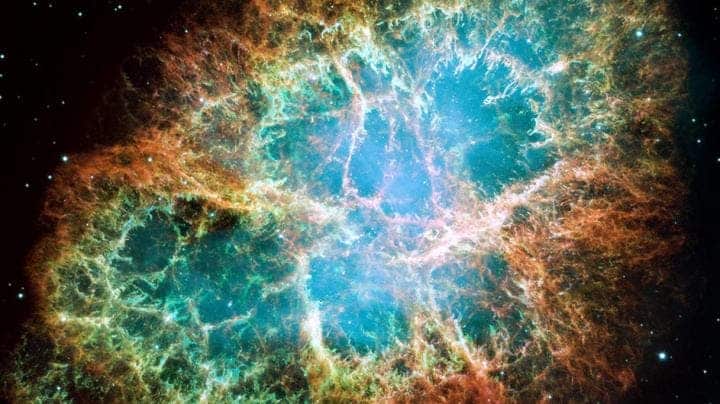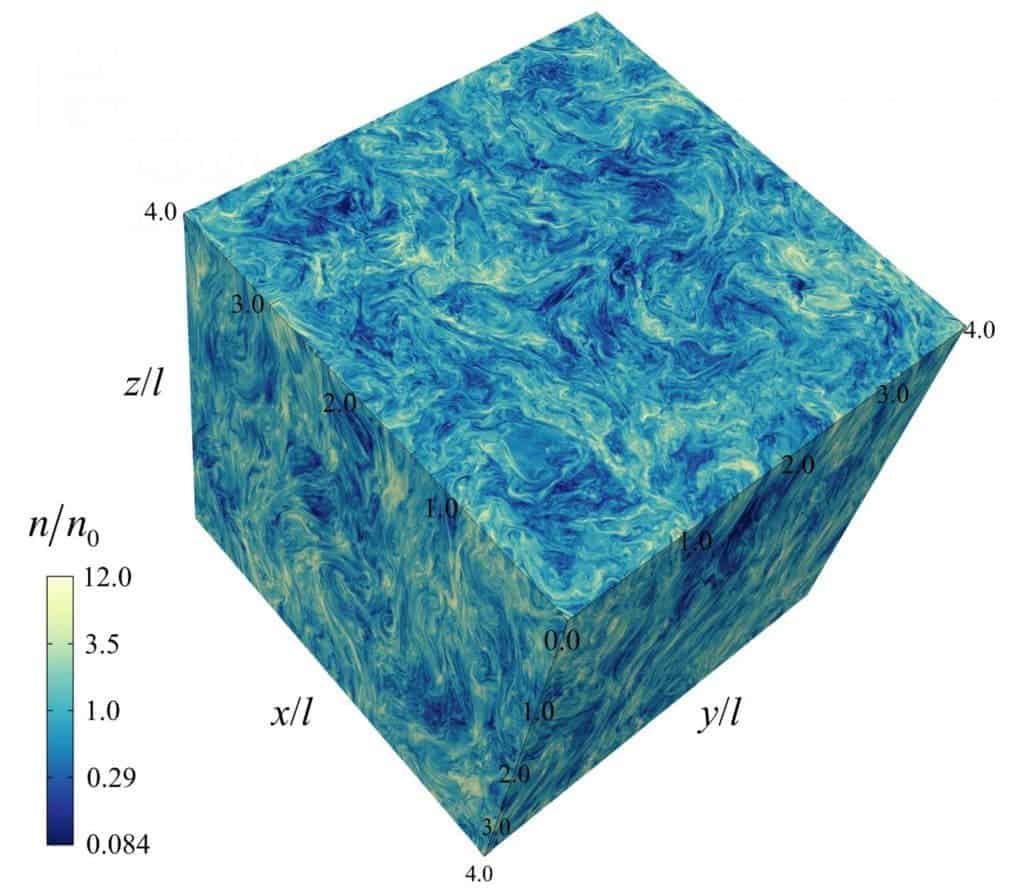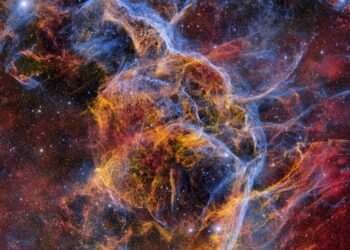
Without question, black holes and neutron stars are the most mysterious objects in the known universe. One of the mysteries that has surrounded these dense objects that arise at the conclusion of a star’s lifetime is the source of the electromagnetic radiation emitted from regions of space that host them.
Astrophysicists have suspected for decades that this high-energy radiation is a product of electrons moving at near light speeds around black holes and neutron stars.
The missing piece of the puzzle, however, is exactly what process causes these electrons to be accelerated to such relativistic speeds.
Now, in a study published in the Astrophysical Journal, astrophysicists Luca Comisso and Lorenzo Sironi discuss massive supercomputer simulations that they have employed to uncover this mystery mechanism behind this acceleration.
The conclusion reached by the duo from Columbia University is that this velocity is granted by an interaction between chaotic motion and a phenomenon called ‘reconnection’ found in tremendously powerful magnetic fields.
“Turbulence and magnetic reconnection–a process in which magnetic field lines tear and rapidly reconnect–conspire together to accelerate particles, boosting them to velocities that approach the speed of light,” says Comisso, a postdoctoral research scientist at Columbia and first author on the study.
The researcher goes on to explain that regions that host black holes and neutron stars are permeated by a sea of extremely hot gas particles. As these gas particles move chaotically they drag magnetic field lines with them. This drives vigorous magnetic reconnection.
“It is thanks to the electric field induced by reconnection and turbulence that particles are accelerated to the most extreme energies, much higher than in the most powerful accelerators on Earth, like the Large Hadron Collider at CERN,” Comisso continues.
Calculating chaos
The difficulty in studying such turbulent gas is that chaotic motion is impossible to predict precisely. In fact, the problem of dealing with the mathematics of turbulence is so well-known that it is one of the seven problems that make up the Millennium Prize challenge in mathematics.

Comisso and Sironi tackled this issue from an astrophysical standpoint by designing and employing extensive supercomputer simulations to solve equations which describe turbulence of charged particles in a gas. These simulations are some of the largest ever created in this research area.
“We used the most precise technique–the particle-in-cell method–for calculating the trajectories of hundreds of billions of charged particles that self-consistently dictate the electromagnetic fields. And it is this electromagnetic field that tells them how to move,” adds Sironi, assistant professor of astronomy at Columbia and the study’s principal investigator.
The researchers point out that the most critical element of the study was the identification of the role played by magnetic reconnection in this turbulent environment.
Their simulations suggest that reconnection ‘selects’ particles that will be accelerated to magnetic fields to near relativistic speeds. It simulations also show that particles in this environment gained most of their energy by bouncing off the turbulent fluctuations at random.
The stronger the magnetic field involved in this process, the more rapid the acceleration of the electrons. These strong fields also cause the particles to travel in a curved trajectory, with such acceleration causing the emission of electromagnetic radiation.
“This is indeed the radiation emitted around black holes and neutron stars that make them shine, a phenomenon we can observe on Earth,” Sironi says.
Understanding the extreme environments around Black Holes and Neutron Stars
The duo of researchers point out that the ultimate aim of their study is to better understand the extreme environments surrounding both black holes and neutron stars and the events that occur in them.
This could, in turn, shine additional light on both fundamental physics and our understanding of how the universe functions.
But there is still much work to be done.
The team plan to compare the predictions revealed by their simulations to observations of electromagnetic radiation emitted by the Crab Nebula. By analysing the electromagnetic spectrum of this bright supernova debris leftover from the violent explosion of a star they can connect their work with actual observations.
“We figured out an important connection between turbulence and magnetic reconnection for accelerating particles, but there is still so much work to be done,” Comisso concedes. “Advances in this field of research are rarely the contribution of a handful of scientists, but they are the result of a large collaborative effort.”
Original research: https://iopscience.iop.org/article/10.3847/1538-4357/ab4c33






